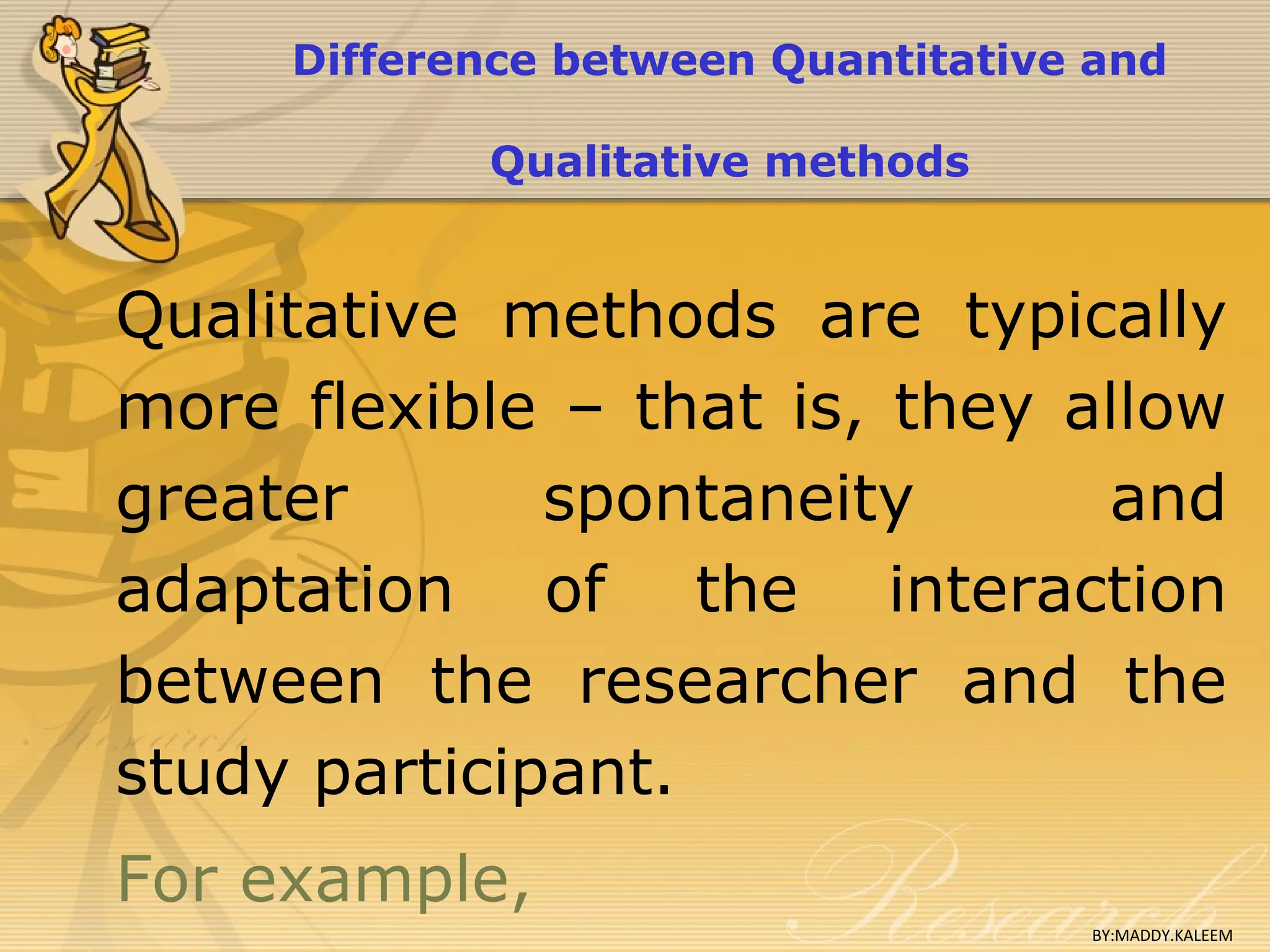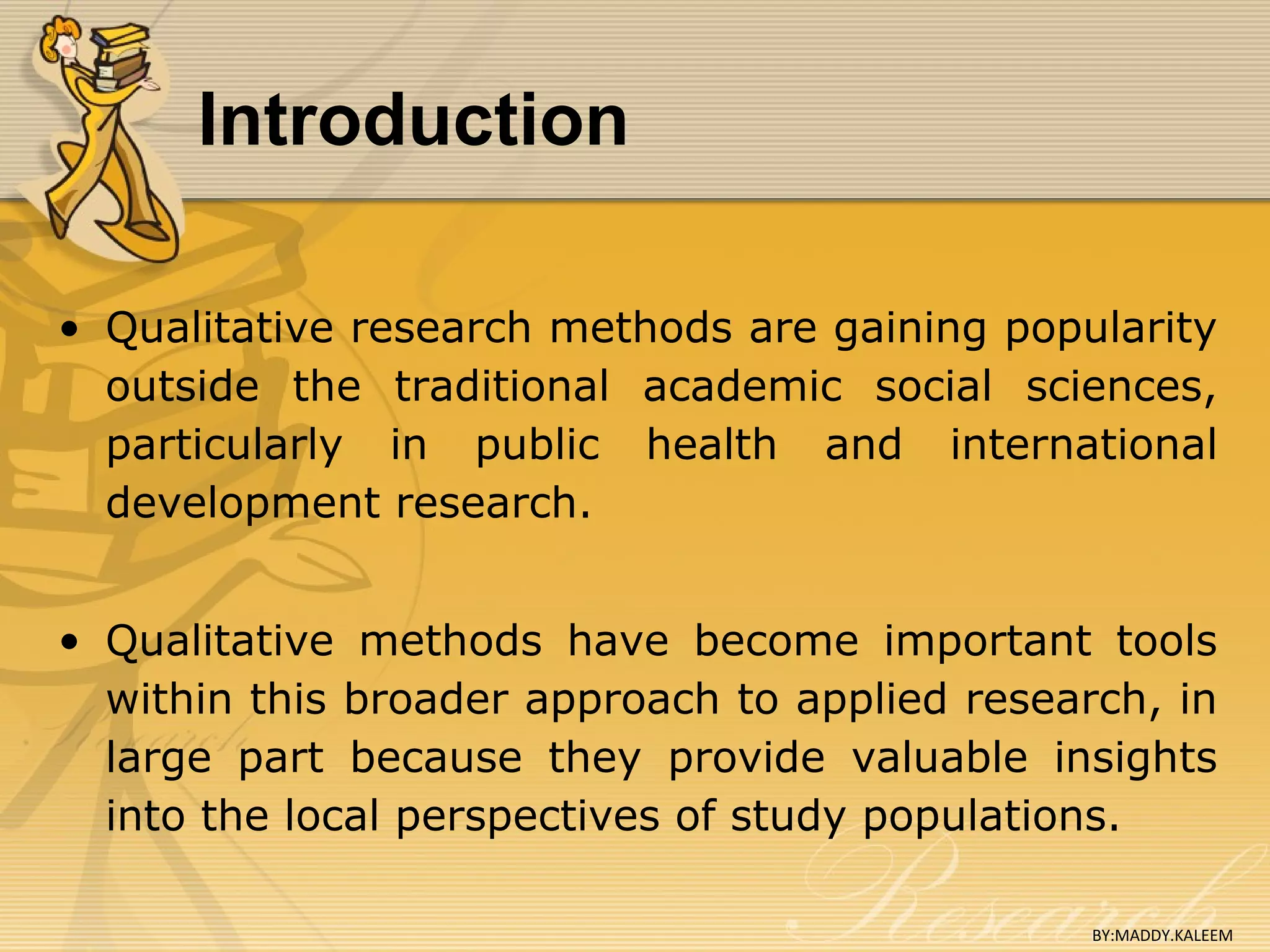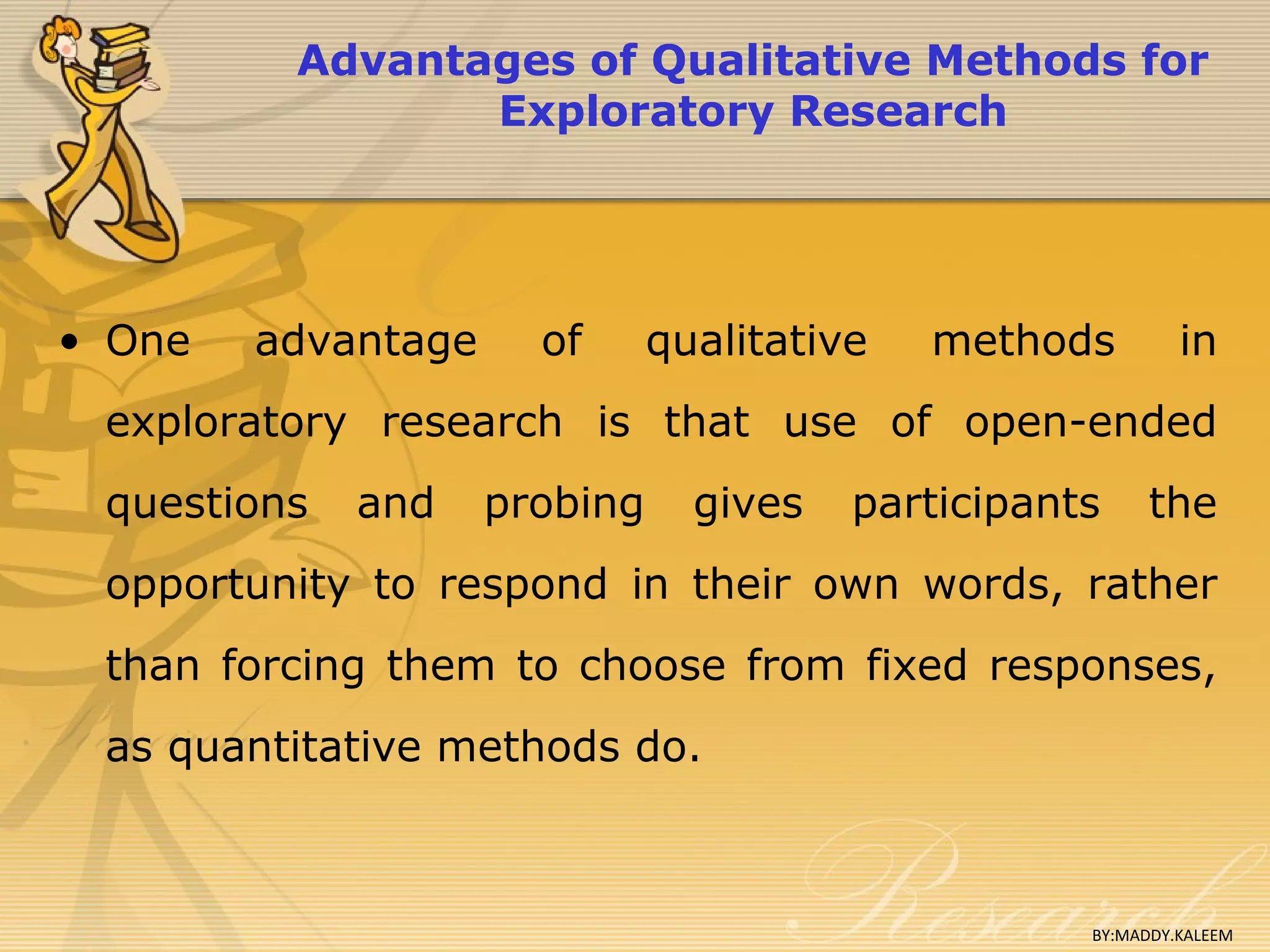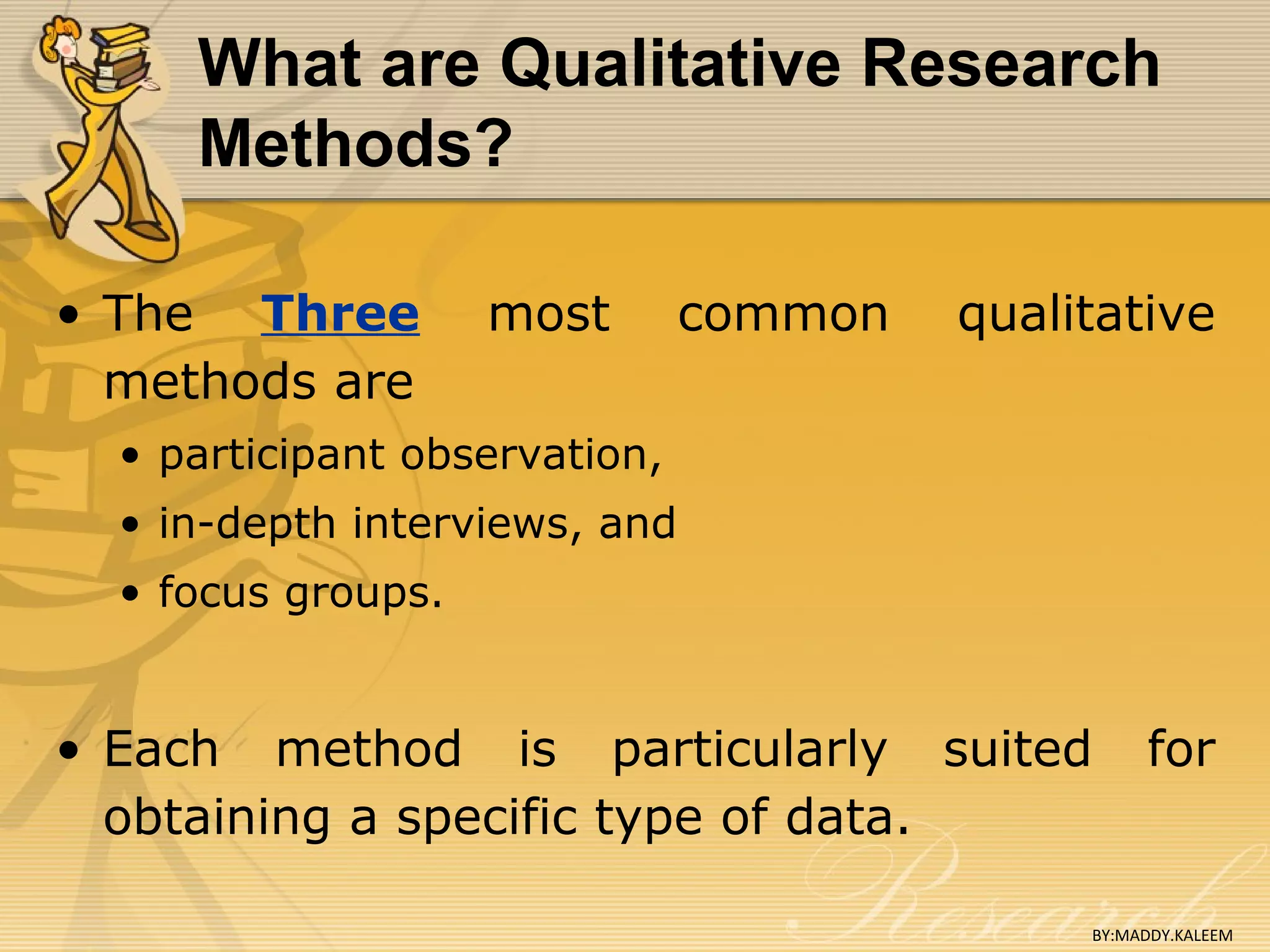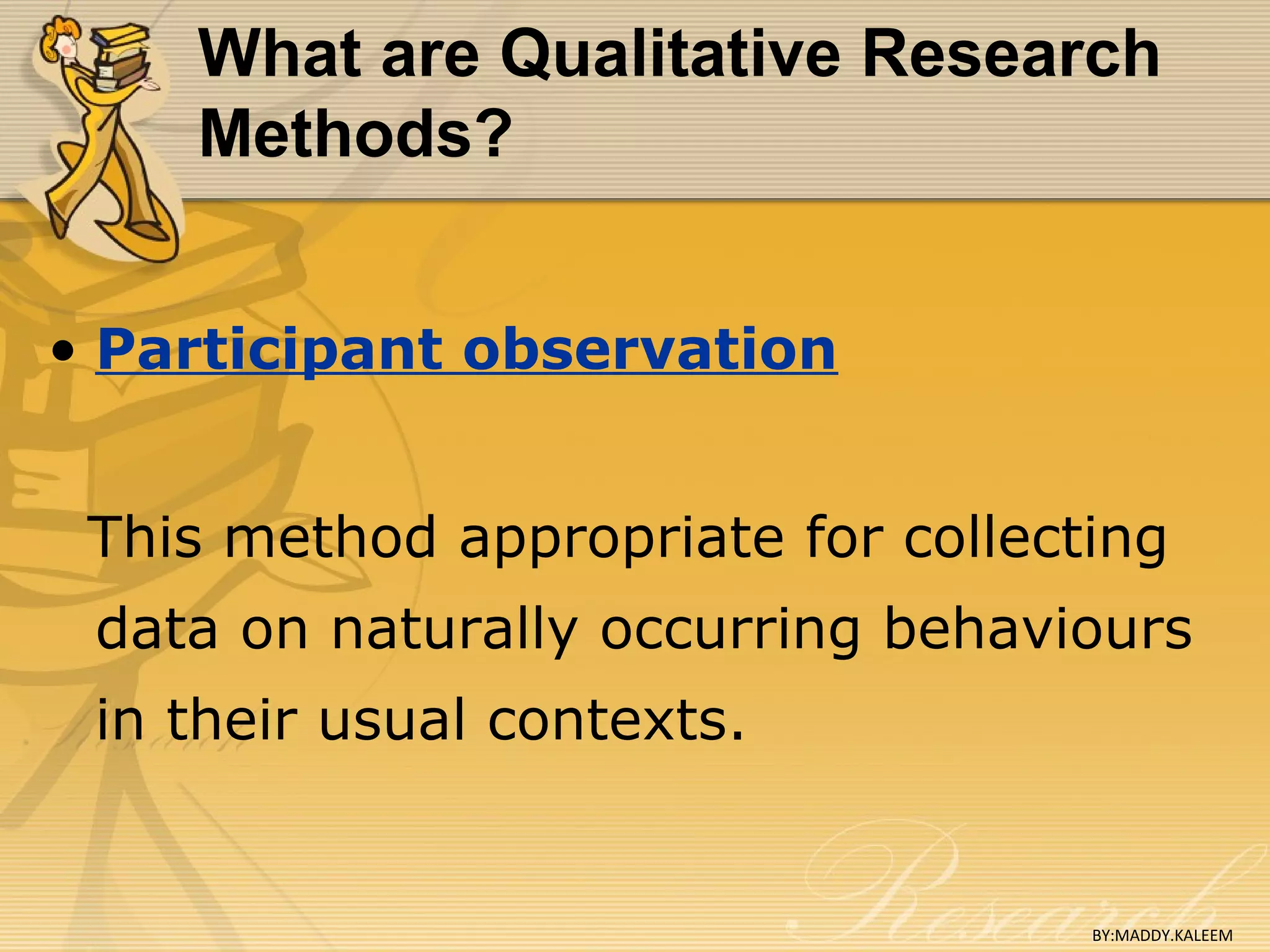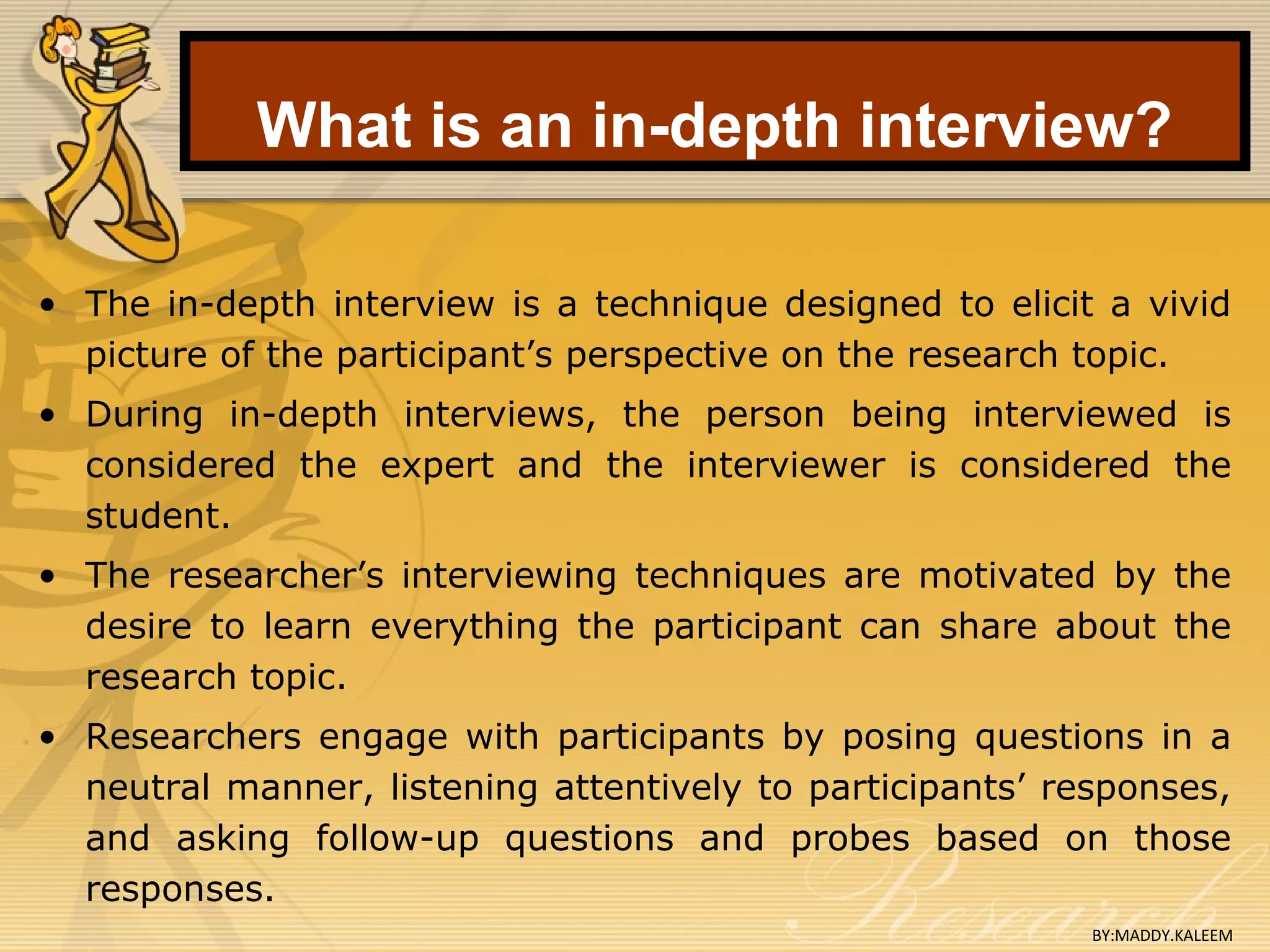This document discusses and compares quantitative and qualitative research methodologies. It provides information on:
- The basic differences between quantitative and qualitative research, including their analytical objectives, types of questions asked, data collection instruments used, types of data produced, and flexibility.
- Common methodologies used in social science studies, including quantitative and qualitative approaches.
- Details on quantitative research, which aims to test theories, uses standardized instruments and large sample sizes, and takes a deductive approach. Qualitative research aims to build theories, uses small sample sizes and flexible instruments like interviews, and takes an inductive approach.
- The key difference between the two is flexibility - quantitative methods are less flexible while qualitative methods allow greater















